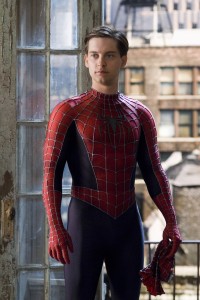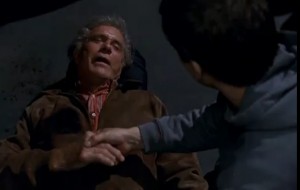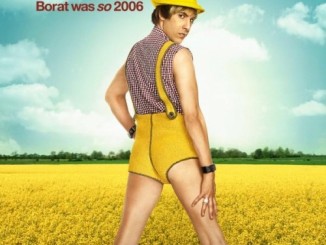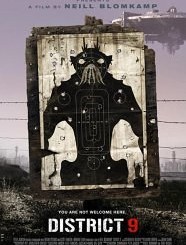In a multi-part series, Comic Book Film Editor William Gatevackes will be tracing the history of comic book movies from the earliest days of the film serials to today’s big blockbusters and beyond. Along with the history lesson, Bill will be covering some of the most prominent comic book films over the years and why they were so special. Today, we look at one of the best superhero franchises, the first Spider-Man trilogy.
 The years of stops and starts were behind it, and all the legal wrangling was a thing of the past. It was now finally time for Sony to bring Spider-Man to the big screen. The only question was who would be the director at the helm.
The years of stops and starts were behind it, and all the legal wrangling was a thing of the past. It was now finally time for Sony to bring Spider-Man to the big screen. The only question was who would be the director at the helm.
Sony was not messing around. When it began its search in 1999, its list of directors included Roland Emmerich ( three years removed from Independence Day and following up the critically lambasted yet still successful Godzilla), Tim Burton (the man who brought Batman to the big screen and was coming off Mars Attacks and a failed attempt to bring a Nic Cage Superman to the big screen), Chris Columbus (much in demand director of Home Alone and Mrs. Doubtfire who was coming off a hit with Stepmom), and David Fincher (who was still riding high from Se7en and was in the process of making Fight Club at the time).
Each director would do well in capturing a quality of the character. Emmerich would do well with the bombast and spectacle of the character, Burton the quirky weirdness, Columbus the heart and sensitivity and Fincher the dark and morbid underpinnings (his proposal for the film? Start with the death of Gwen Stacy). But the director they chose was able to capture all these characteristics of Spider-Man and more. That director would be Sam Raimi.
 Raimi was at the time best known for the Evil Dead series of films, but was starting to move away from genre films with films such as A Simple Plan, For the Love of the Game, and the then in-production, The Gift. But Raimi was also a comic book collector with a focus on the Silver Age. So, Sony hired the perfect man for the job, someone who understood the character yet was a great director with a unique style and vision.
Raimi was at the time best known for the Evil Dead series of films, but was starting to move away from genre films with films such as A Simple Plan, For the Love of the Game, and the then in-production, The Gift. But Raimi was also a comic book collector with a focus on the Silver Age. So, Sony hired the perfect man for the job, someone who understood the character yet was a great director with a unique style and vision.
Once Raimi signed on, work began on updating the James Cameron scriptment to the big screen. David Koepp replaced Cameron’s Electro and Sandman analogs with the more pertinent Green Goblin and Doctor Octopus. Raimi’s wish to play up the father/son triangle between Norman and Harry and Norman and Peter caused Doc Ock to become expendable. The character was removed in Scott Rosenberg’s rewrite. Eventually, practically the only thing remaining in the final film from Cameron’s scriptment was the organic web-shooters.
 Raimi then set about casting the film. Even though the studio wanted a big name like Leonardo DiCaprio or Freddie Prinze Jr. (yes, for a brief period after I Know What You Did Last Summer and She’s All That, Prinze was a big name), Raimi insisted on Tobey Maguire for the role of Peter Parker. Casting Norman Osborn/Green Goblin was slightly more difficult, as first choices Nicolas Cage (thankfully) and John Malkovich (regrettably) passed on the role. Luckily, a copy of the script fell into Willem Dafoe’s hands and he began to lobby for the part. Eventually, he won Raimi over and was cast as the villain.
Raimi then set about casting the film. Even though the studio wanted a big name like Leonardo DiCaprio or Freddie Prinze Jr. (yes, for a brief period after I Know What You Did Last Summer and She’s All That, Prinze was a big name), Raimi insisted on Tobey Maguire for the role of Peter Parker. Casting Norman Osborn/Green Goblin was slightly more difficult, as first choices Nicolas Cage (thankfully) and John Malkovich (regrettably) passed on the role. Luckily, a copy of the script fell into Willem Dafoe’s hands and he began to lobby for the part. Eventually, he won Raimi over and was cast as the villain.
This was a boon for the franchise. Maguire was well enough known as an actor that he was recognizable, but was not so famous that he would overshadow the character. He also was a great character actor, playing Peter’s angst-filled and somewhat sad sack persona without ever becoming annoying. And Dafoe was a great fit for Osborn, creating the right note as a good man going insane. In other hands, the transformation would not be believable. In Dafoe’s it was.
 Of course, the casting was solid top to bottom, with everyone doing well in their roles. Kristen Dunst’s Mary Jane might not have been the sexpot she was in the comics, but she was the girl next door the script called for. James Franco did well as Harry in what he was given. But the greatest acting job of the entire cast was J.K. Simmons as J. Jonah Jameson. Simmons totally captured the bluster and the bombast of the character to a “T”. Also, watch closely as you will see future stars Joe Manganiello (True Blood) and Elizabeth Banks (The Hunger Games) as Flash Thompson and Betty Brant.
Of course, the casting was solid top to bottom, with everyone doing well in their roles. Kristen Dunst’s Mary Jane might not have been the sexpot she was in the comics, but she was the girl next door the script called for. James Franco did well as Harry in what he was given. But the greatest acting job of the entire cast was J.K. Simmons as J. Jonah Jameson. Simmons totally captured the bluster and the bombast of the character to a “T”. Also, watch closely as you will see future stars Joe Manganiello (True Blood) and Elizabeth Banks (The Hunger Games) as Flash Thompson and Betty Brant.
But even this time around, the path to the big screen wasn’t without bumps, this time provided by real world events. While teasing the film in the summer of 2001, Sony wanted to show that the film was set in New York and used an iconic New York City landmark in its publicity—the World Trade Center. The Twin Towers feature prominently in the first posters for the film (look at Spidey’s eyes in the poster to the right for their reflection) and in the first teaser trailer.
Unfortunately, the events of September 11, 2001 turned the advertising’s respectful nod to a famous part of the New York skyline into a haunting reminder of the lives lost when terrorists attacked those buildings. The poster and trailer were both recalled and a scene with random New Yorkers added to the final film to reflect the spirit of cooperation citizens showed in the days after the tragedy.
The film itself follows in the formula established by X-Men two years earlier. It made changes to the story so that it would make a better film, but stayed true to the spirit if the original work. Spider-Man is still a decent human being, horribly haunted by one poor decision that left someone he loved dead. The main differences are that he was bitten by a genetically altered spider and not a radioactive one. And his main nemesis dressed up as a flea market version of Iron Man instead of, well, a goblin.
 But overall, the film worked because it struck this balance. Uncle Ben still dies, but this time immediately after Peter negligently lets the robber escape. This allows for a powerful scene between Cliff Robertson (as Ben) and Tobey Maguire, as Peter arrives in time to spend a last few minutes with his uncle.
But overall, the film worked because it struck this balance. Uncle Ben still dies, but this time immediately after Peter negligently lets the robber escape. This allows for a powerful scene between Cliff Robertson (as Ben) and Tobey Maguire, as Peter arrives in time to spend a last few minutes with his uncle.
A similar, character-defining death scene occurred the same year in Star Wars II: Attack of the Clones and the difference in quality is embarrassing. Anakin’s mother’s death is supposed to be one of first things that push him to the dark side. Unfortunately, compared to Uncle Ben’s death, it lacks emotional potency and seems hollow.
Raimi also employed some of his cinematic trademarks in the film. The 1973 Oldsmobile Delta 88 Raimi uses in most of his films became the Parker’s family car. And longtime collaborator Bruce Campbell has a cameo as a wrestling announcer who gives Spider-Man his name.
The film set records when released, including becoming the first film to earn $100 million dollars in its opening weekend. The $39,406,872 it made on its first day set a record for the highest opening day total. The film grossed $403,706,375 domestically and $821,708,551 worldwide, making the long road to the screen worth it. Obviously, it also meant that a sequel was in the making. We’ll talk about that next time out as we wrap up the Raimi era of Spider-Man.





HISTORY OF THE COMIC BOOK FILM: Up, Up And Away, Web! http://t.co/rg8D8tGMRZ
William – For me, growing up in England, Spider-Man hit the silverscreen long before he had a chance to in America. The first TV pilot was released at the cinema when it first aired. In fact, I saw it twice at the cinema…as well as a sequel ( A double length episode?).